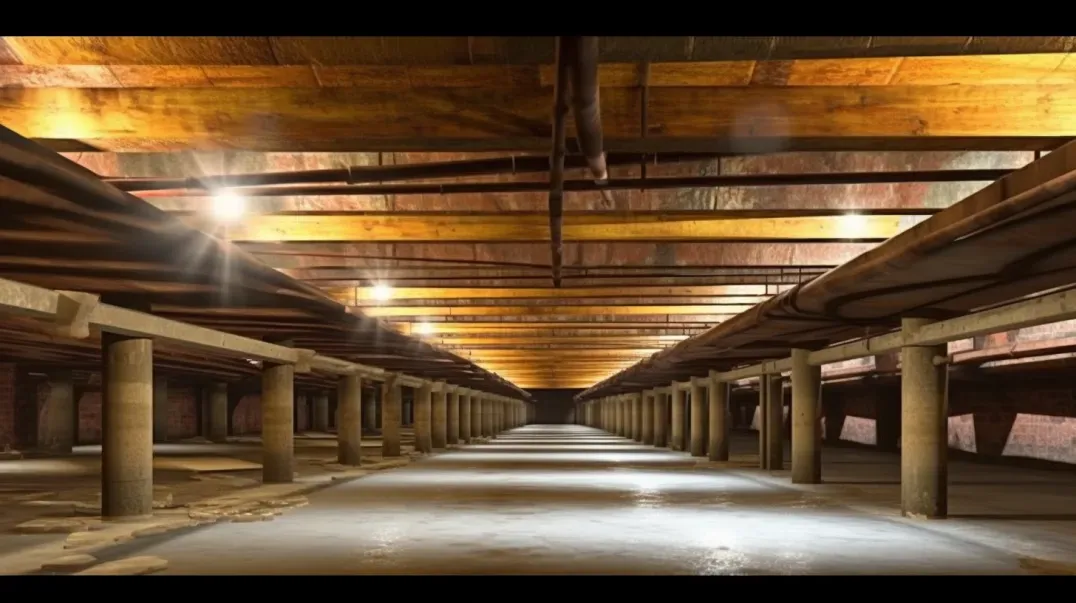Beneath the bustling life within our homes lies a critical, often overlooked component that plays a pivotal role in our well-being and the structural integrity of our living spaces: the crawl space. This hidden area, if neglected, can become a source of moisture buildup, mold growth, and air quality issues, silently undermining the health of the structure and its inhabitants. Proper ventilation in the crawl space is not just a building requirement; it's a vital necessity for preserving the longevity of your home and ensuring a healthy living environment. This blog delves into the crucial importance of maintaining effective ventilation in your crawl space, exploring how the right ventilation system can act as a guardian, protecting your home from the ground up and significantly improving the air quality within.
Moisture is a home's silent adversary, with the potential to cause extensive damage if left unchecked. A well-ventilated crawl space combats this threat by regulating air flow, reducing humidity levels, and preventing the accumulation of dampness that can lead to mold and mildew. The benefits of this are twofold: it not only safeguards the structural components of your home, such as wooden beams and foundation walls, from rot and decay but also enhances the overall air quality, creating a healthier environment for you and your family.
Through a comprehensive exploration, we will uncover the mechanisms by which proper ventilation facilitates a dry, healthy crawl space environment. From natural airflow techniques to advanced mechanical systems, understanding the options available for optimizing crawl space ventilation can empower homeowners to take proactive steps. By doing so, you can prevent the escalation of moisture issues into costly repairs, safeguarding your home's value and ensuring the well-being of those who live within its walls.
Join us as we navigate the essentials of crawl space ventilation, offering insights and practical advice to help you maintain the health of your home from the ground up. Because when it comes to protecting your investment and your loved ones, every breath of fresh air counts.
Understanding Crawl Space Ventilation Needs
The crawl space, often hidden and overlooked, plays a crucial role in the overall health and stability of your home. Proper ventilation within this space is essential for preventing a host of issues that can lead to significant damage and health risks. This guide delves into why ventilation matters for your crawl space and offers practical guidelines for assessing its current state and understanding its specific ventilation needs.
Why Ventilation Matters
Ventilation in the crawl space is not just about air movement; it's about safeguarding your home's foundation and ensuring a healthy living environment. Here's why proper ventilation is critical:
- Moisture Control: Effective ventilation helps to reduce humidity levels in the crawl space, preventing the accumulation of moisture that can lead to mold and mildew growth. These conditions not only pose health risks but can also attract pests and lead to unpleasant odors permeating your home.
- Mold Prevention: By keeping the crawl space dry, ventilation directly combats the conditions that allow mold and mildew to thrive. Mold can cause structural damage to wooden components and pose serious health risks to residents, especially those with allergies or respiratory issues.
- Structural Integrity: Moisture is a leading cause of wood rot and can weaken the structural elements of your home, leading to costly repairs. Proper ventilation helps preserve the integrity of your home's foundation and structural supports by ensuring they remain dry and free from decay.
Assessing Your Crawl Space
Understanding the specific ventilation needs of your crawl space is key to implementing effective solutions. Here are guidelines for evaluating its current state:
- Inspect for Moisture: Look for signs of moisture accumulation, such as water pooling, damp insulation, or condensation on pipes and walls. These signs indicate inadequate ventilation and the need for immediate action.
- Check for Mold: Visible mold growth or a musty smell in the crawl space are clear indicators that ventilation improvements are necessary to remove excess moisture and prevent future growth.
- Evaluate Vent Placement and Size: Ensure that vents are correctly placed and sized according to building codes and best practices. The general rule is 1 square foot of vent area for every 150 square feet of crawl space, but this may vary based on specific conditions and local regulations.
- Assess Air Flow: Assess whether the current ventilation setup allows for adequate air flow throughout the entire crawl space. Poor air circulation can lead to stagnant areas where moisture and mold can accumulate.
- Consider Environmental Factors: Take into account the climate and environmental conditions surrounding your home. Homes in humid climates or areas prone to flooding may require additional ventilation solutions or moisture control measures.
By thoroughly assessing your crawl space and understanding its unique needs, you can implement targeted ventilation strategies that effectively prevent moisture buildup, mold growth, and structural damage. Whether through natural ventilation, mechanical systems, or a combination of both, ensuring your crawl space is well-ventilated is a critical step in maintaining the health and longevity of your home.
Types of Crawl Space Ventilation Systems
Ensuring proper ventilation in your crawl space is crucial for maintaining the health and structural integrity of your home. Moisture accumulation can lead to mold growth, wood rot, and attract pests, making effective ventilation a key preventative measure. There are two primary types of ventilation systems for crawl spaces: natural and mechanical. Each has its advantages and applications, depending on the specific needs of your home and the local climate.
Natural Ventilation Options
Natural ventilation leverages the natural flow of air to circulate and refresh the air within the crawl space, removing moist air and replacing it with drier air from the outside. Here's how it works and when it's most appropriate:
- How It Works: Natural ventilation utilizes vents placed around the crawl space perimeter. These vents allow outside air to flow through the crawl space, facilitated by differences in air pressure and temperature between the inside and outside environments.
- When It’s Appropriate: Natural ventilation is most effective in areas with low humidity levels and where the outside air can help keep the crawl space dry. It's a cost-effective solution that works well in climates where the introduction of outside air will not contribute to the moisture problem.
- Limitations: In humid climates or during rainy seasons, natural ventilation might introduce more moisture into the crawl space, potentially exacerbating moisture issues. It's also less controllable than mechanical systems and may not be sufficient alone in all climate conditions.
Mechanical Ventilation Systems
For homes where natural ventilation is insufficient to control moisture effectively, mechanical ventilation systems offer a more controlled solution. These systems use fans, dehumidifiers, and other devices to manage crawl space air quality. Here’s a detailed look at these systems:
- Exhaust Fans: These are installed in crawl space vents or walls and work by actively pulling moist air out of the space. They can be particularly effective when used in conjunction with a humidistat, which activates the fan based on specific humidity levels.
- Dehumidifiers: Dehumidifiers remove moisture from the air, helping to maintain optimal humidity levels. They are essential in humid climates or during seasons when natural ventilation might introduce additional moisture into the crawl space.
- HVAC Integration: Some systems integrate the crawl space with the home’s HVAC system, using ductwork to condition the air and maintain consistent temperature and humidity levels. This approach requires professional installation and is more complex but can be highly effective in regulating crawl space conditions.
- Considerations: Mechanical systems require an energy source and regular maintenance. They offer more precise control over crawl space conditions but come with higher initial and operational costs compared to natural ventilation.
Choosing the right ventilation system for your crawl space depends on various factors, including climate, home construction, and existing moisture levels. In some cases, a combination of natural and mechanical ventilation may offer the best solution for maintaining a dry, healthy crawl space.
Planning Your Ventilation Installation
Proper ventilation is essential for maintaining a healthy, comfortable, and safe environment in any space, whether it's your home, office, or a specific area like a crawl space. Planning your ventilation installation requires careful consideration of your space's unique needs, including calculating the right amount and type of ventilation and choosing the most suitable equipment. Here's a guide to help you through the planning process.
Calculating Ventilation Requirements
Determining the right amount and type of ventilation for your space is crucial to ensure effective air exchange, moisture control, and overall air quality. Follow these steps to calculate your ventilation requirements:
- Assess the Space: Start by assessing the size of the space, its current air quality issues (such as moisture, odors, or pollutants), and any existing ventilation. This assessment will help you understand the scope of your needs.
- Understand Building Codes: Check local building codes and regulations regarding ventilation requirements. Many areas have specific guidelines based on the square footage of the space, its use, and other factors.
- Calculate Ventilation Rate: The ventilation rate, typically measured in cubic feet per minute (CFM), indicates how much air needs to be exchanged to maintain healthy air quality. A common guideline for residential spaces is to provide enough ventilation to exchange the air in a room 2 to 3 times per hour. However, spaces with higher moisture or pollutant levels may require more frequent exchanges.
- Consider the Climate: Your local climate can significantly impact your ventilation needs. For example, spaces in humid climates may require more aggressive moisture control, while those in colder regions might need ventilation solutions that minimize heat loss.
Choosing the Right Equipment
Once you've calculated your ventilation requirements, selecting the right equipment is the next step. Here are tips for choosing the best ventilation equipment for your space:
- Evaluate Types of Ventilation Systems: Based on your needs, decide whether natural ventilation (such as windows and vents), mechanical ventilation (such as exhaust fans and air handling units), or a combination of both is most appropriate.
- Research Equipment Options: Look for ventilation equipment that matches your calculated CFM requirements and is suitable for your space's size and layout. Consider energy-efficient models to reduce operational costs.
- Check for Features: Depending on your specific needs, you may want equipment with additional features such as built-in humidistats, timers, or heat recovery capabilities to enhance efficiency and control.
- Consult with Professionals: For complex spaces or if you're unsure about your calculations and equipment choices, consulting with HVAC professionals or ventilation experts can provide valuable insights and recommendations tailored to your situation.
Planning your ventilation installation with a thorough understanding of your space's requirements and carefully selecting the right equipment will ensure that you achieve effective, efficient ventilation. This proactive approach will contribute to a healthier environment, prevent moisture-related issues, and enhance the comfort and safety of your space.
Step-by-Step Installation Guide for Crawl Space Ventilation
Ensuring your crawl space is properly ventilated is crucial for maintaining the structural integrity of your home and ensuring a healthy living environment. This step-by-step guide will walk you through the process of preparing your crawl space for ventilation installation and then detail how to install vents, fans, or other mechanical systems effectively.
Preparing Your Crawl Space
Proper preparation of your crawl space is essential for a successful ventilation installation. Follow these pre-installation steps to ensure the area is ready:
- Inspect the Crawl Space: Conduct a thorough inspection of your crawl space to identify any existing issues such as water damage, mold growth, or pest infestations. Address these issues before proceeding with the installation.
- Clean the Area: Remove any debris, standing water, or obstructions. This includes clearing away old insulation materials, trash, or stored items that could impede airflow or access to the installation sites.
- Seal Gaps and Cracks: Identify and seal any gaps or cracks in the foundation walls and around pipes or cables that enter the crawl space. Use appropriate sealants to prevent water and air leaks.
- Lay Down a Vapor Barrier: If not already in place, install a vapor barrier on the crawl space floor to prevent ground moisture from entering the space. Ensure the barrier overlaps at seams and extends up the foundation walls.
Installing Vents and Fans
Once your crawl space is prepared, you can proceed with installing the ventilation components. Here are detailed instructions for installing vents and fans:
- Determine Vent Locations: Based on your ventilation plan, identify the locations for your vents. Ideally, vents should be placed to allow for cross-ventilation, with vents located on opposite sides of the crawl space.
- Install Vents: For new vent installations, you may need to cut openings in the foundation walls. Use a reciprocating saw to cut the openings, following the dimensions required for your vents. Secure the vents in place according to the manufacturer's instructions, ensuring they are properly sealed and weatherproofed.
- Install Exhaust Fans: If your ventilation plan includes exhaust fans, choose locations that will facilitate effective air movement. Fans should be installed in vent openings or in the crawl space walls. Ensure the fan is directed to expel air outside the crawl space. Connect the fan to a power source, following all electrical safety guidelines. Consider installing fans with humidistats for automatic moisture control.
- Check for Proper Airflow: Once vents and fans are installed, verify that air is flowing correctly through the crawl space. You may use smoke pens or incense sticks to visually confirm airflow patterns.
- Monitor and Adjust: After installation, monitor the humidity levels and overall conditions in your crawl space regularly. Adjustments may be needed to optimize ventilation and moisture control.
By following these steps, you can effectively install a ventilation system in your crawl space, contributing to the longevity of your home and the health of its occupants. Remember, if you're unsure about any part of the installation process, consulting with a professional is always a wise decision to ensure the job is done safely and correctly.
Balancing Ventilation with Moisture Control
Maintaining a healthy and comfortable indoor environment requires a delicate balance between ventilation and moisture control. Excessive moisture can lead to mold growth, structural damage, and decreased indoor air quality, making it crucial to manage humidity levels effectively. This guide explores strategies for using ventilation to control humidity and how to enhance your moisture control efforts with dehumidifiers and vapor barriers.
Managing Humidity Levels
Effective humidity management is essential for preventing moisture-related issues in your home. Here are strategies for using ventilation to control humidity effectively:
- Cross Ventilation: Ensure your home is designed for cross ventilation, with vents or windows placed opposite each other to allow for natural airflow. This helps in removing moist air from your home and replacing it with drier air from outside.
- Exhaust Fans: Install exhaust fans in high-moisture areas such as bathrooms, kitchens, and laundry rooms. These fans help expel moist air directly outside, preventing it from circulating throughout your home.
- Ventilation Timing: Use ventilation strategically, especially in humid climates. Ventilate during the cooler parts of the day when the outdoor air is drier, and limit ventilation during peak humidity to prevent introducing more moisture into your home.
- Regular Maintenance: Keep your ventilation system well-maintained to ensure it operates efficiently. Clean vents and filters regularly to prevent blockages that can impede airflow and moisture removal.
Integrating Dehumidifiers and Vapor Barriers
While ventilation plays a critical role in controlling humidity, integrating dehumidifiers and vapor barriers can provide additional protection against moisture:
- Dehumidifiers: For areas where ventilation alone is insufficient to control humidity, consider using a dehumidifier. These devices can be particularly effective in basements, crawl spaces, and other areas prone to dampness. Select a dehumidifier with a capacity appropriate for the size of the space and consider models with automatic humidity sensors for ease of use.
- Vapor Barriers: Installing a vapor barrier in your crawl space or basement can significantly reduce moisture levels. A vapor barrier is a material, typically plastic or foil sheeting, that prevents water vapor from entering through the ground or walls into your home. Ensure the barrier covers the entire ground surface and is properly sealed at all seams and edges.
- Integration with Ventilation: When using dehumidifiers and vapor barriers, it's important to ensure they work in harmony with your ventilation system. For example, a dehumidifier can reduce the burden on your ventilation system by lowering indoor humidity levels, making it easier to maintain a comfortable and healthy indoor environment.
Balancing ventilation with moisture control requires a comprehensive approach that considers the unique characteristics of your home and local climate. By managing humidity levels through effective ventilation and complementing these efforts with dehumidifiers and vapor barriers, you can protect your home from moisture-related issues and create a healthier living space.
FAQs
Contact Trench Guys Today!
Trench Guys will do everything we can to ensure your experience with us is excellent.
Request A FREE Estimate
Request a Free Estimate Form
Checkout Recent Post
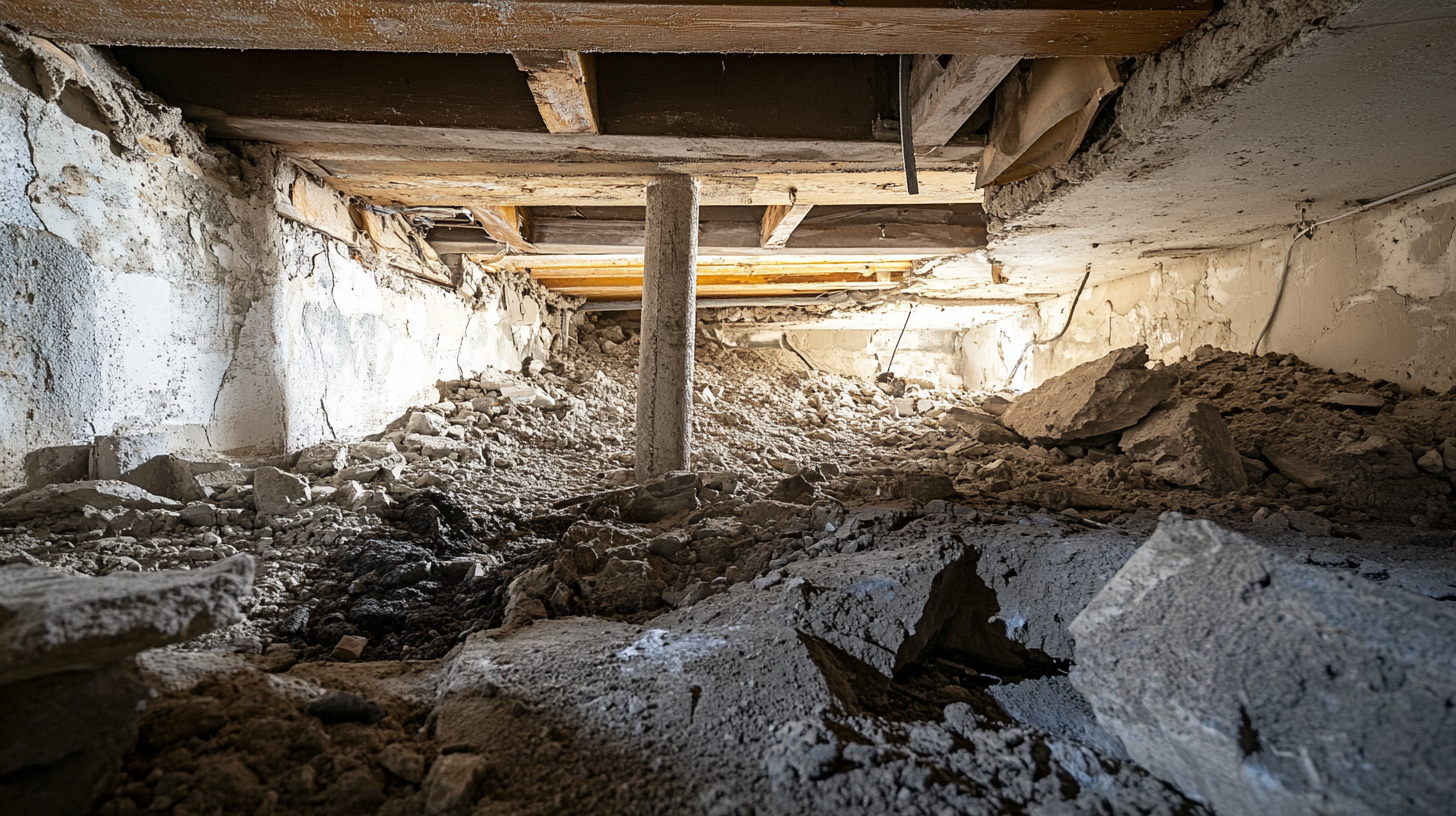
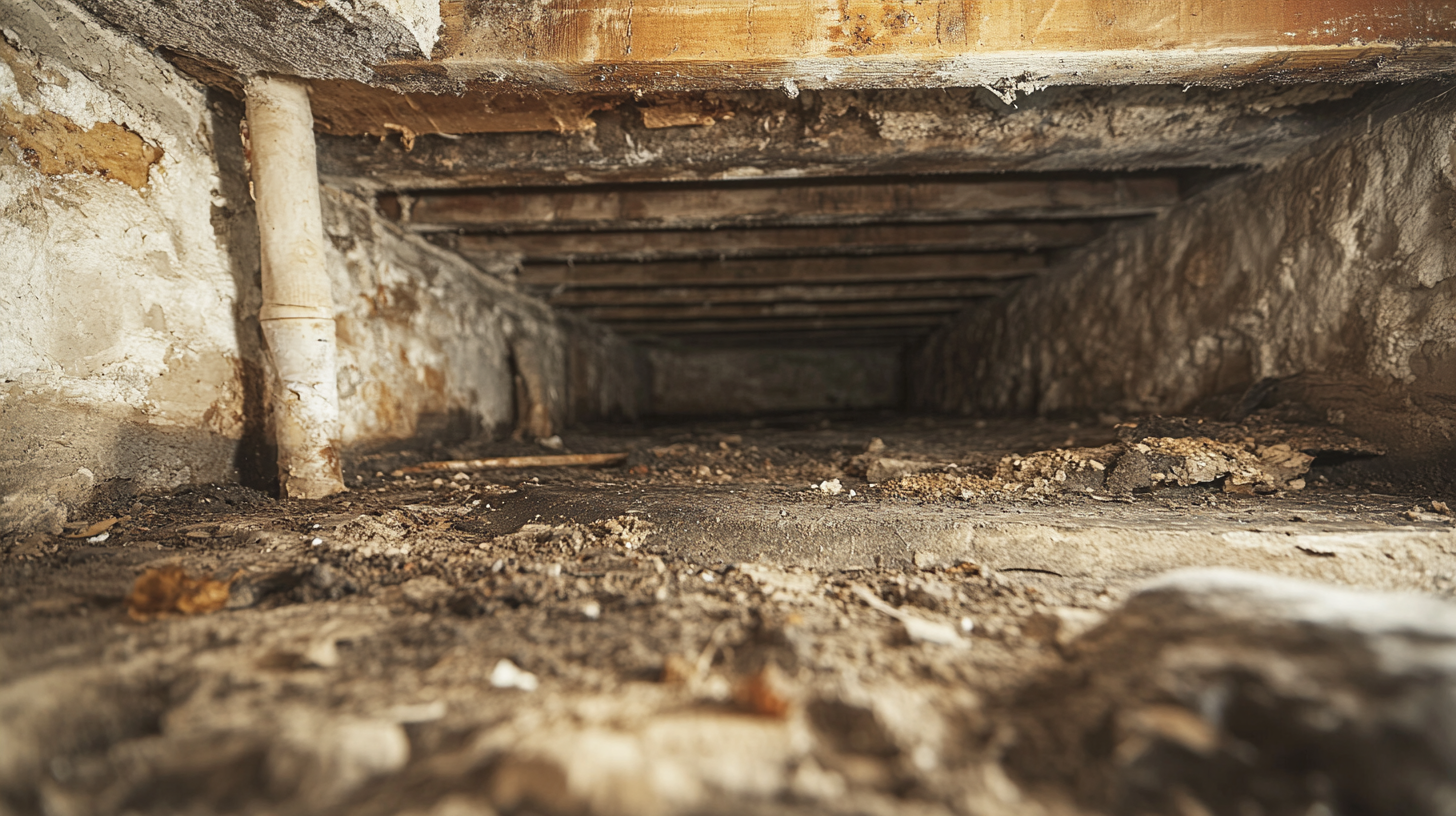
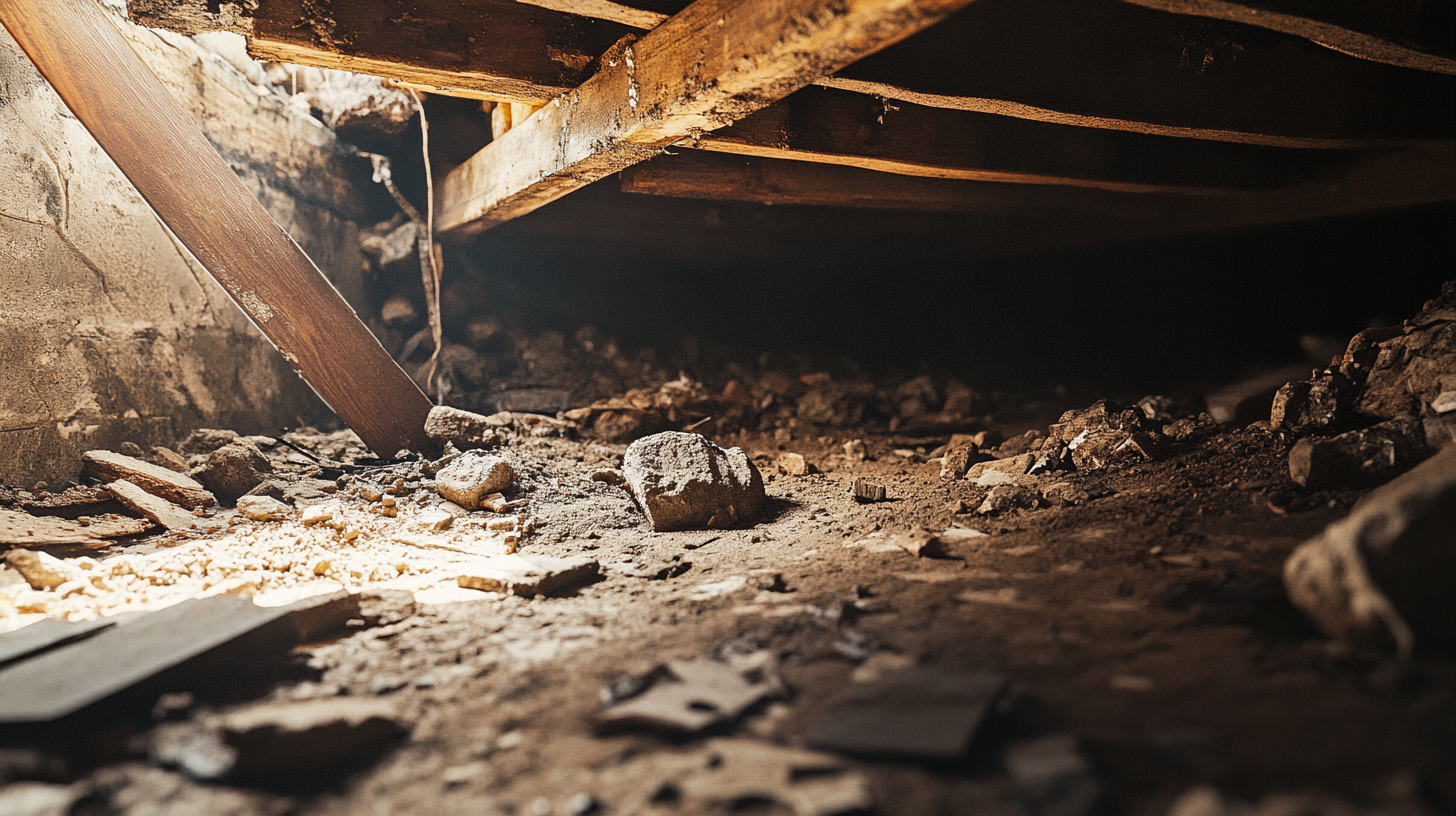
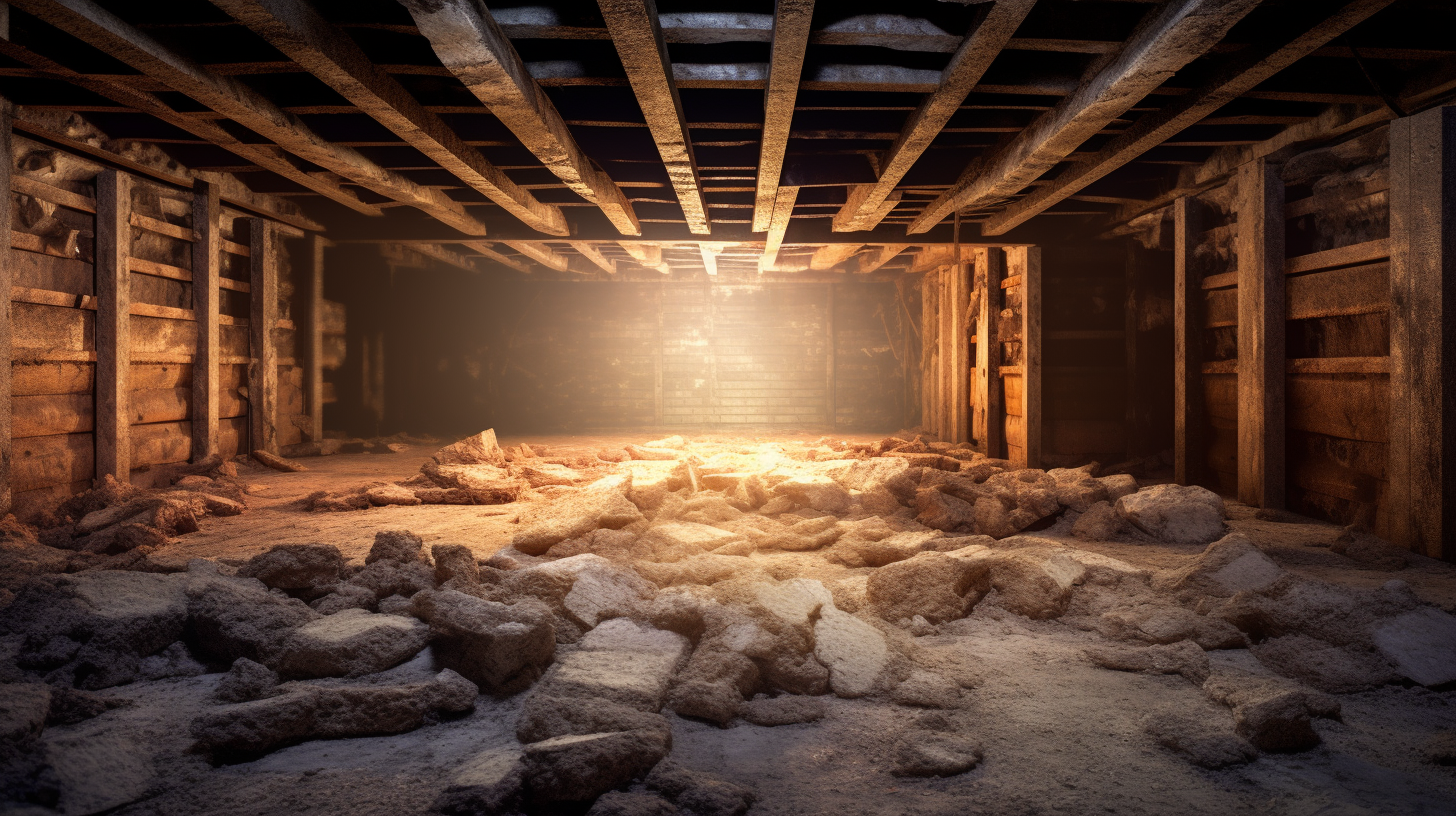
Got a Question? We’re Here to Help.
You can arrange an appointment or make an enquiry by phone or email, orget in touch to us via our contact form.


